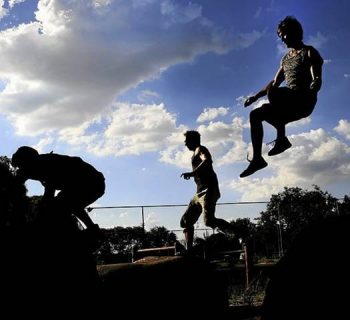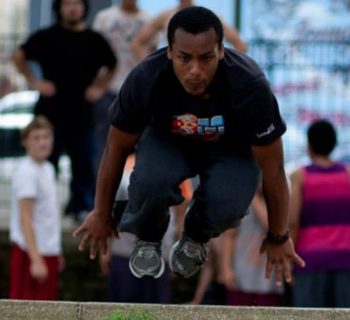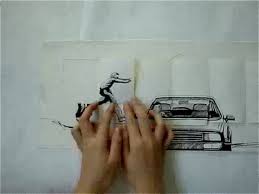“Your vision changes when you get into parkour. Seeing trees and rooftops—it never turns off,” a practitioner and teacher of the discipline says.
by Anne Ford (ChicagoReader)
If you google 'parkour,' you'll come up with a definition like 'using movements such as running, jumping, climbing, swinging, to get from point A to point B quickly and efficiently.' That's not wrong, but it's limited. Parkour is more of a discipline.
"Many people train in a way that's about exploring physical limitations. Some people are just having fun with their environment, seeing the world as a playground. Others are trying to be ready to move fast and efficiently during emergency situations. I play with a bit of everything. I do love to play with my physical abilities, and also with trying to overcome fear of certain movements and objects.
"There are a lot of practitioners who push themselves to do big jumps or big drops, and they'll add flips and tricks. Because that is so flashy and eye-catching, the media loves it. So when I mention parkour to random people, they say, 'I can never do that. I'm not fit enough.' When I started, I was in a similar state. I felt very insecure with my body. I was overweight. Even though I didn't start off in the best shape, as I practiced more and played with small movements, I started to feel more confident.
"In my classes, I work with a lot of people who don't have any movement background. I'll show them basic bear crawls, crawling on the floor with hands and feet and nothing else touching the ground, keeping your back low and parallel with the ground. Then I'll show them some simple vaults. How to take a landing. Small jumps. As they start to feel more comfortable with the movements, we take it further.
"Your vision changes when you get into parkour. Seeing trees and rooftops—it never turns off. If I'm in a car with other instructors, we're like, 'Oh, look at this jump over there! Look at that wall!' Here in Chicago, it's harder to find spaces where you can practice parkour and not get kicked out because of liability issues. We usually train around Grant Park, or sometimes we'll train by the Riverwalk, where they have these ledges and stairs.
"I have trouble with jumps onto rails. If the rails are only like four or five feet apart, jumping from one to the other it doesn't feel like a natural thing. Even something as small and simple as that can get that fight-or-flight reaction going for me. With this training, you start to have a relationship with your own fear. You learn to calm yourself down, to fight the voice that says, 'Don't do it.' Once you overcome that, a world of possibilities opens up.
"I don't play too much with big scary stuff. Some of the bigger stuff I'll do would be like six- or seven-foot drops, maybe going into a roll. Cat leaps, where you catch the edge of the top of a wall. Maybe working on flips a little bit, or balancing at height on rails. I don't think you would be that scared to see me do it. In five years, I've only sprained my ankle once."







